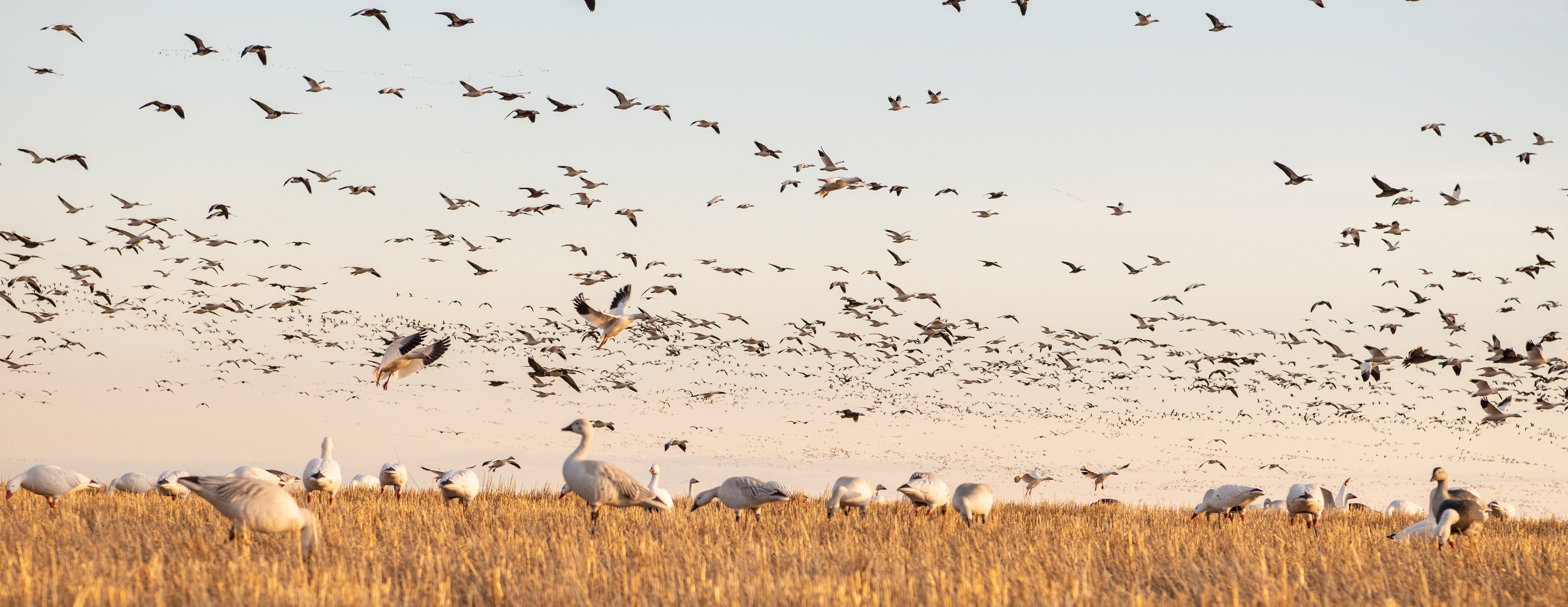With no 2020 breeding and habitat survey, forecasts for the upcoming light-goose seasons are mixed
As spring light-goose seasons rev up across the flyways, anxious hunters want to know what to expect. And although answers are difficult to find this year, reports point to a somewhat down season with a few possible bright spots.
Hunting success during the spring conservation-order season (for snow, blue and Ross' geese) typically hinges on goose production the previous spring, as juvenile birds are easier to decoy than experienced adult geese. However, because of the COVID-19 pandemic, the U.S. Fish and Wildlife Service canceled the 2020 Waterfowl Breeding Population and Habitat Survey, a critical annual barometer of the fall flight. And because of the threat of COVID to native communities, researchers were not allowed at important light-goose nesting sites in Canada, canceling banding work and population studies. Still, biologists have gleaned some bits of information on the Spring 2021 flight.
Mike Szymanski, supervisor of migratory game-bird management for the North Dakota Game and Fish Department, said he's heard from folks working on snow goose colonies that production wasn't very good but was by no means a bust. Evidence of that was seen during Fall 2020 in North Dakota.
“Some colonies fared worse than others, and none did well, but I don't think any hung a goose egg on production — couldn't resist, sorry," he said. "I'd guess that this spring, numbers of juvies encountered by hunters will be below average but far from zero.”
A Sept. 24, 2020, report by Paul Wait, senior director of communications and magazine editor for Delta Waterfowl, said the 2020 breeding season for mid-continent snow geese was expected to be poor, so spring snow goose hunters might face a season similar to 2018-'19, when flocks were composed almost entirely of adults and hunting was tough.
Wait's report quoted Frank Baldwin, wildlife biologist for the Canadian Wildlife Service, who said spring weather in the eastern Arctic was poor for goose reproduction.
“Spring was quite late this year, with 40 centimeters (about 16 inches) of snow still on the ground in the second week of June,” he said. “It was a late, cold spring, so things do not look good in the eastern Arctic for light goose production.”
In the article, Baldwin also said “awful rains” hit Baffin Island during a critical hatching period for snow geese. Located north of the Arctic Circle in Nunavut, the island is a critical nesting colony for snows.
The outlook appeared better for central Arctic regions, according to the Delta article. In northern Manitoba, banding crews noted 20 percent juvenile snow geese in a small sample size of 500 birds. However, spring was also late in that region.
As of Feb. 1, snow cover throughout much of the country was relatively moderate, so an early thaw might prompt geese to push northward quickly. Snow geese often follow the receding snow line, and early springs can equate to accelerated migrations.
Of course, eager hunters will soon find out how the Spring 2021 season unfolds. And as Szymanski said, the jury is still out.
“We'll have a better handle on what hunters harvested for a comparable age ratio,” he said, “after we get done with the parts collection survey work in February.”
Click here for more Realtree waterfowl hunting content. And check us out on Facebook.








